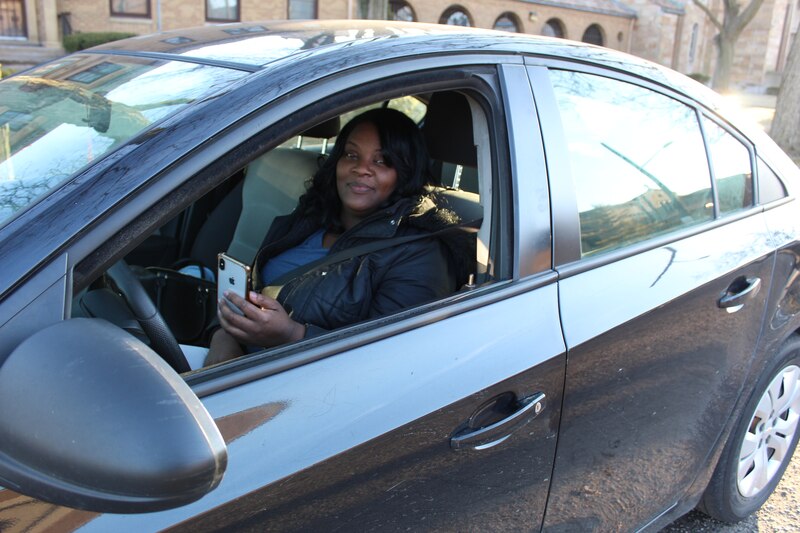When Mayor Mike Duggan pitched the concept of a new bus line serving district and charter schools, he framed it as a strategy to help lure back the 30,000 Detroit students who travel outside the city for school — many of them riding buses provided by enterprising suburban districts.
“If [the bus line] works, we’re going to replicate these routes in one area after another in the city so you never again have a kid riding an hour on the bus to go to another location,” he said last year, touting the unusual collaboration between district and charter schools.
Six months into the program, the buses are up and running. Every morning and afternoon, they ferry children around an 11-mile loop in northwest Detroit, stopping at district and charter schools in the area. Kids can board the line at whichever stop is most convenient.
Hundreds of families are using the service, but it is far from clear whether transportation provided by the so-called GOAL Line will be able to bring back students who attend suburban schools.
So far, the line’s biggest attraction doesn’t seem to be transportation at all. Instead, most families are drawn by the free, high-quality after-school program offered to students who use the route, according to a program survey and interviews with parents and GOAL Line staff.
As it turns out, many families who use the GOAL Line already live close to the 10 schools that the bus route serves, according to data collected by the program. Ridership in the morning is one-third of the ridership in the afternoon — a sign that parents rely on the buses mostly to get their child to and from the after-care program at the Northwest Activities Center, a community center and gym run by the city.
The parent survey did find some evidence that the program is convincing parents to keep their kids enrolled in city schools, but the sample size was too small to be ascribed much significance: Just 34 parents of 116 who responded to that question on the survey said the program contributed to their staying local.
“We have to go back and look at our hypothesis,” said Stephanie Young, executive director of the GOAL Line. “We’ve found the biggest benefit for our families has been transportation in the afternoon and afternoon programming. It’s amazing how people are drawn to it.”

Half a year in, the after-school program is still small, with 128 students attending on an average day.
For the high-profile backers of the GOAL Line — including the mayor of Detroit, leaders of the city district, top figures in the charter school sector, and a local foundation — the findings are a reminder that free, quality after-school care is a problem in Detroit at least on par with transportation. The city’s median family income is under $37,000; many after-school care programs charge as much as $3,400 a year per child.
Child care for young children is a well-known bugbear for working families that has drawn the attention of policymakers at the highest levels, from 2020 presidential candidates to Gov. Gretchen Whitmer, whose proposed budget would sharply increase funding for early child care in the state. But those proposals don’t address the challenge of finding care for school-aged children between 3 p.m. and 6 p.m., when school is out and many parents are still at work.
Shatinka Skinner drives her nine-year-old son to school every morning. But her job with a financial services company in Southfield keeps her busy several hours after most schools let out.
“If I didn’t have a latchkey option,” she said referring to after-school programs, “I’d have to make arrangements every day.” In the past, she paid for an after-school program operated by the YMCA that cost $65 a week. She sees the GOAL Line’s free after-school classes — also operated by the YMCA — as a great opportunity, not to mention a bargain.
Students get lessons in gymnastics, robotics, and Spanish. Swimming lessons will start soon.
“He seems to enjoy it,” Skinner said of her son. “They offer a lot more activities here than at his school.”
The costs of the buses and the after-school program have so far been entirely covered by the city, the Skillman Foundation, and the participating schools, with each covering about a third of the $1.2 million annual cost. (Skillman also funds Chalkbeat. Read our Code of Ethics here).
The participating schools will decide in coming months whether to continue the program. The city and Skillman have already agreed to support it for multiple years.
For now, the program is free, but the GOAL Line may begin charging a $25-per-semester facilities fee for those who attend after-care, Young said, largely to encourage more regular attendance.
That’s still just an idea, but even with the fee, the program would still be far cheaper than other options.
The savings are already adding up for Cherelle Hill, a delivery driver for FedEx whose four children attend the GOAL Line after school.
“I used to pay close to $1,200 a month,” she said.
The problem of transportation isn’t going anywhere for parents in Detroit, many of whom spend hours every day on Detroit’s threadbare public transit system taking their kids to school.
It’s possible that word about the bus-in option was slower to reach the 25 percent of Detroiters who don’t have a car — a major liability in a city that is difficult to navigate without one.
Indeed, a significant minority of GOAL Line families listed transportation as a priority, according to the survey.
Wanda George started her grandchildren on the GOAL Line in December, several months after the program started, having learned about it through word-of-mouth. As she waited for the bus to drop her grandchildren at Lincoln-King Academy, a charter school near her house, she said the program would mean weeks of additional schooling for her grandchildren.
Before they began riding the GOAL Line, they had been walking to and from their elementary school, Coleman A. Young Academy, more than a mile away. Dkari is eight years old, and Brooklin is six. When it was too cold, they often stayed home, she said. She estimates that they missed more than three weeks of school this year before they began using the bus line.
Indeed, a lack of reliable transportation among city residents has contributed to the sky-high rate of absenteeism — 70 percent at last count — in the Detroit Public Schools Community District.
George and her daughter — the children’s mother — care for the kids together, but they only have one car between them. Their work schedules — George at a Comerica Bank in suburban Livonia, her daughter as a nursing home aide (she also works night shifts at Providence hospital) — don’t allow them to take the children to and from school. They tried using a rideshare service, but it was too expensive to use every day.
“Without the GOAL Line, a lot of kids wouldn’t make it,” George said.


